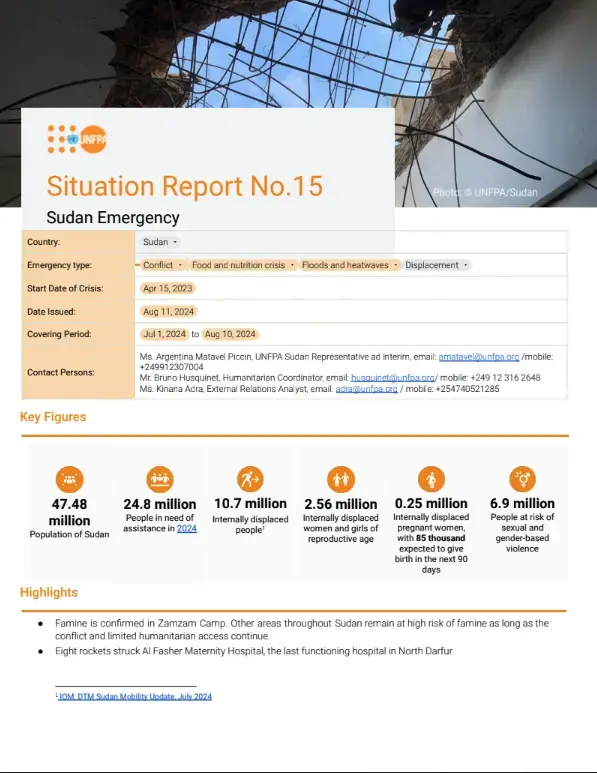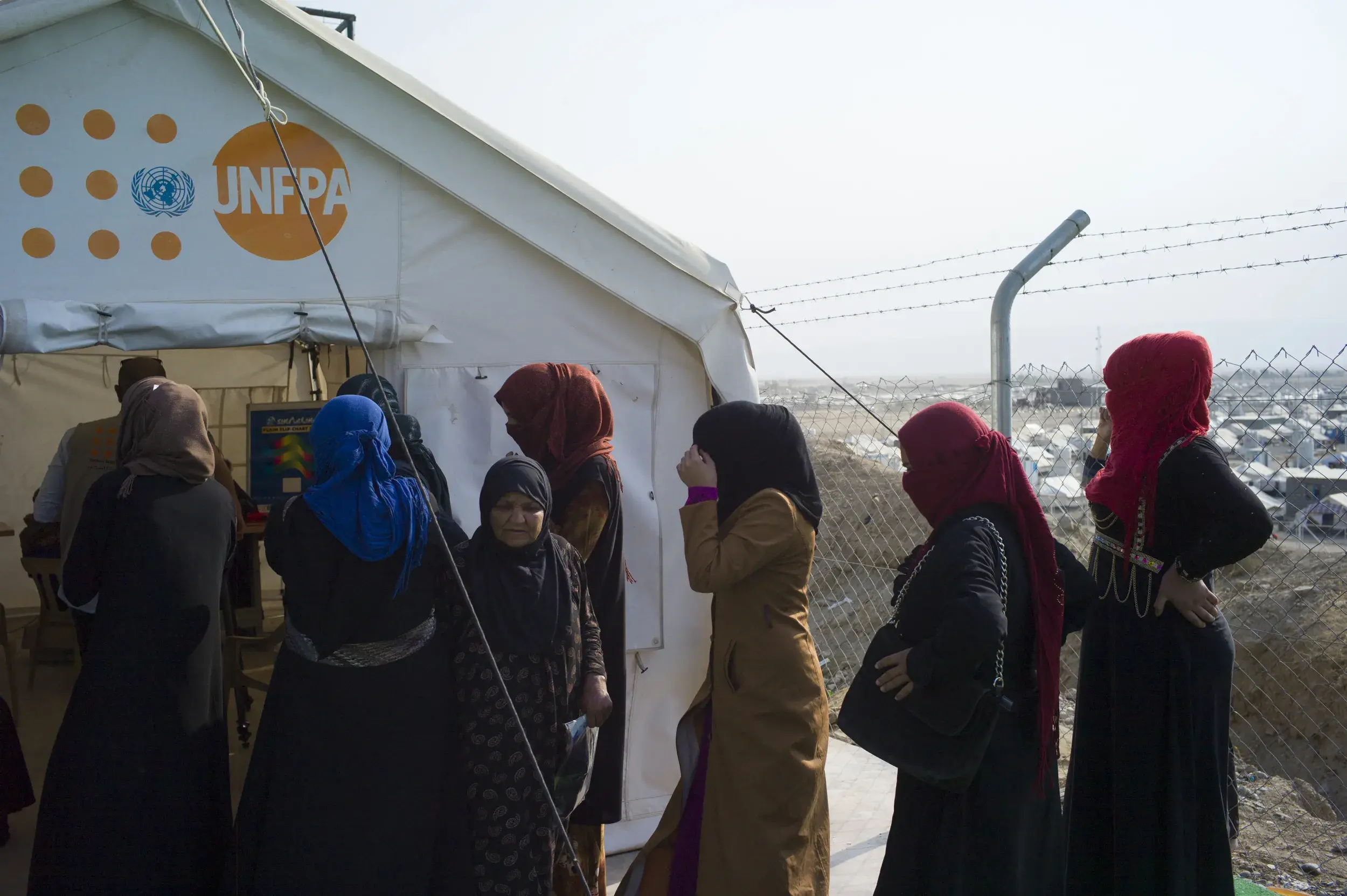Since the conflict outbreak between the Sudanese Armed Forces (SAF) and the Rapid Support Forces (RSF) on 15 April 2023, the security situation across Sudan remains extremely unstable. Significant clashes have been reported in Khartoum, Aj Jazirah, North Darfur, West Kordofan, North Kordofan, and Sennar. Over 10.7 million people are now internally displaced in Sudan. This extensive displacement has heightened risks in maternal and child health, with more than 255,000 currently displaced pregnant women and an estimated 85,000 live births in the next three months.
Conflict: Between 1 April and 30 June 2024, up to 328,981 people were displaced in Al Fasher locality in North Darfur. Attacks on Al Fasher Saudi Hospital have severely reduced its operational capacity and caused extensive infrastructure damage, including to the maternity ward. Despite the most recent attack, UNFPA continues to provide operational support for lifesaving SRH interventions and is collaborating with partners to support the renovation and installation of a solar-powered electric system. In Sennar, reported clashes displaced an estimated 725,965 individuals between 25 June and 29 July 2024. The displaced individuals have moved to other locations within Sennar, other states in Sudan (Gedaref, Kassala, Blue Nile, White Nile, River Nile, and Red Sea), and across the border to South Sudan. In West Kordofan, clashes in Al Fula town and other locations in As Salam locality have similarly increased displacement in the state, which now hosts 356,934 IDPs.
Famine: About 25.6 million people—more than half of Sudan's population—are facing acute hunger, with more than 755,000 people in 10 states — including the five Darfur states, South Kordofan, North Kordofan, Blue Nile, Aj Jazirah, and Khartoum — on the brink of famine, according to the latest IPC analysis. The situation is particularly dire in North Darfur State, where Zamzam Camp near the state capital, Al Fasher, has reached famine levels (IPC Phase 5). According to the latest report by the Famine Review Committee (FRC), famine conditions in the Zamzam IDP camp are likely to persist into August through October 2024. The FRC analysis also indicates that similar conditions may be affecting other IDP sites in the Al Fasher area, particularly the Abu Shouk and Al Salam camps. In response , UNFPA has prepared essential supplies at the border in Chad for immediate deployment to Al Fasher and Zamzam. These supplies include 3,000 dignity kits and 26 Inter-Agency Reproductive Health Kits to meet the needs of 2,558 people in need , providing basic and comprehensive.
1.2 million pregnant and breastfeeding women are facing acute malnutrition across Sudan. Persistent food insecurity among displaced families, particularly female-headed households, widows, adolescent girls, and people with disabilities, has led them to adopt negative coping mechanisms to survive. Girls are particularly at risk of having their education cut short and being forced into hazardous work, child marriage, or sexual exploitation and abuse in times of crisis and food shortage. Moreover, the risk of GBV increases as women and girls often lack financial resources and access to essential services and safe spaces.
Floods: Heavy rainfall and flash floods have displaced more than 21,370 people in locations across Aj Jazirah, Central Darfur, Kassala, Khartoum, North Darfur (including Zamzam town near Al Fasher), North Kordofan, Northern, Red Sea, River Nile, West Darfur, and White Nile. The majority of displaced households sought shelter with host communities within the same localities. In Kassala, while flooding has reportedly impacted over 10,700 people, most of whom fled recent hostilities in Sennar State, many were reportedly unable to leave as the flooding from the Gash River blocked main roads and transit routes, and because many households could not afford transport to other states. The onset of the rainy season and poor living and sanitation conditions at IDP sites raise concerns about potential water-borne disease outbreaks like Cholera and Dengue. Approximately 7,863 structures were either partially damaged or destroyed by the rain and floods, including homes, commercial buildings, and latrines.





